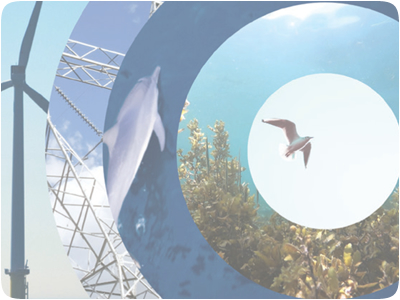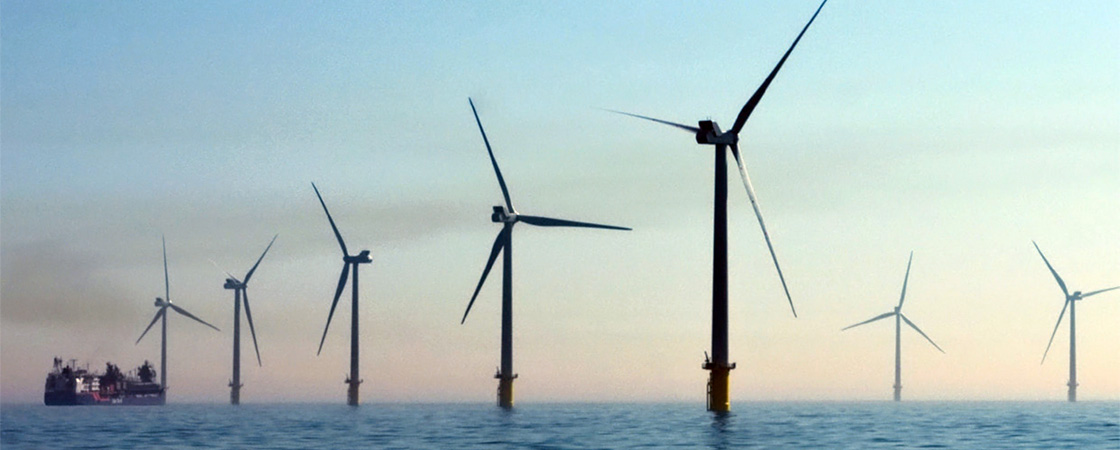 The 2020-2030 decade is a decisive period for the EU and its fight to combat climate change, reduce emissions, protect ecosystems and to deliver a fair energy transition and a healthy environment to European citizens. What Europe will do, will greatly influence energy and climate actions around the globe.
The 2020-2030 decade is a decisive period for the EU and its fight to combat climate change, reduce emissions, protect ecosystems and to deliver a fair energy transition and a healthy environment to European citizens. What Europe will do, will greatly influence energy and climate actions around the globe.
Indeed, the EU will be updating many of its climate policies and legislations in 2021, and it has already published relevant strategies, including 2020's Offshore and Biodiversity Strategies. Both the EU and its Member States will be spending billions of Euros from the recovery fund, thus stimulating and ideally supporting relevant technologies. It is therefore of paramount importance that we make the right decisions, develop the right policies and implement them within the given timeframe.
Offshore development is expected to play an important role in reducing emissions by providing large quantities of electricity from wind and ocean energy. The European Commission estimates at least 60GW of offshore wind by 2030 for all of Europe, today some 25GW are already installed and in the run up to 2050 these numbers will increase dramatically1. The challenges to exponentially increase the offshore deployment of wind and related grids are complex: Not only are our marine ecosystems already highly depleted and polluted, our oceans are also already full of economic activity and often conflicting interests.

In order to enable the offshore energy expansion through fi nding environmentally sound solutions, RGI has initiated the Offshore Coalition for Energy and Nature (OCEaN), as one of 18 founding member organisations, including NGOs, wind industry and transmission system operators from across Europe. In its convener and moderator role, RGI acts as facilitator and driver to foster collaboration among marine stakeholders. Launched a few days before the European Commission's comprehensive Offshore Renewable Energy (ORE) Strategy, OCEaN will offer practical, collaborative approaches and solutions for the implementation of the ORE Strategy. A great amount of work is needed to turn its ambitions into clear and practical implementation steps. In this article, I would like to highlight 3 points and suggest how our coalition can support and enhance their implementation.
1) The ORE Strategy confirms that Member States must realise Maritime Spatial Plans (MSPs) and have them undergo an environmental impact assessment (EIA). This is a very important first step. However, we also need to adopt a basin approach for both technology deployment and nature protection. In particular compensatory measures can be more effective when planned on a large scale, in collaboration, beyond national waters and in view of the entire sea basin. In addition, we need to make sure we plan all the way to full decarbonisation, this will guarantee that today's investments do not prevent future ones. Moreover, we need to ensure our plans prioritise activities in line with political targets and objectives. To this end, we must understand cumulated impacts and fill data gaps to support permitting processes. OCEaN will work on all these issues by promoting best practices and knowledge on cross-border approaches, joint learning, nature-inclusive design options and the sharing of relevant data.
2) This is directly connected to my second point. In order to create the structures for joint learning, for cooperation and inclusive stakeholder dialogue on "environmental and social sustainability of offshore renewable energy" to flourish, the ORE Strategy foresees a "community of practice", in which "all stakeholders, industry, NGOs, scientists can exchange views, share experiences and work on common projects". OCEaN was founded with this exact goal in mind. It provides an open forum for discussion, welcoming all users of the sea, where existing information and experiences are assessed and collated, needs for further research are identified and suggestions are made on how to improve planning offshore renewable energy development for the European seas. We are starting with the Northern Seas but are already planning to expand to all European seas, specifically the Atlantic and the Mediterranean very soon, and later the Black sea. Renewable offshore development should be a joint European exercise and there are many lessons to be learned from the commonalities but also the differences between sea basins.
3) Offshore energy requires grid connections. These have to be planned together. The ORE Strategy has put forward a series of steps to clarify regulatory issues and cost allocation. These are all necessary to support innovative approaches, such as the use of hybrid grid technologies. Still, we need to consider that all energy generated at sea needs to be transported to consumption centres. OCEaN is therefore also looking at impacts of energy infrastructure on land. This does not just include landing points but also how the electricity grid needs to be planned and expanded to accommodate increasing shares of wind and ocean energy. In order to make sure this is the case, OCEaN advocates for stronger linkages between offshore development and grid planning, in the plans for the coming ten years as well as with a perspective towards full decarbonisation. This way, we can understand the implications of increasing shares of offshore RES in the European energy system and the consequences in terms of costs and environmental impacts, especially with regard to space needs and the implications of electrification vs gasification.
Collaboration lies at the core for successfully planning everything we need to consider. A substantial pillar of our energy future will have to rest on the shoulders of successful offshore development. We therefore need to make sure that we do it right – and work on it together, in a collaborative manner, with all relevant stakeholders having a voice.
1. The ORE Strategy states: "Starting from today's installed offshore wind capacity of 12 GW, the Commission estimates that the objective to have an installed capacity of at least 60 GW of offshore wind and at least 1 GW of ocean energy by 2030, with a view to reach by 2050 300 GW10 and 40 GW11 of installed capacity, respectively, is realistic and achievable." Source: European Commission (2020) An EU Strategy to harness the potential of offshore renewable energy for a climate neutral future. COM/2020/741 final.